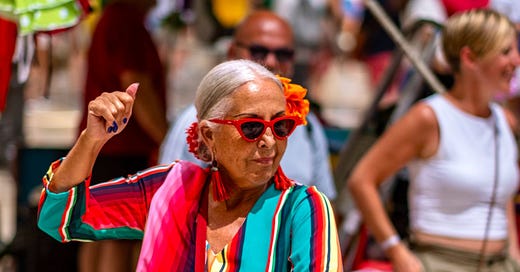She’s wearing a winter coat in the depths of the Spanish summer. A silver-haired man pushes her along the periphery of our local playground as she stares at nothing. Until there’s something. She looks at the wriggling ball of energy in my arms with the same awe in her eyes as yesterday. My daughter knows the drill.
The wheelchair-bound lady doesn’t have the strength to return the wave. “Gracias,” says her carer before shuffling onwards. Tomorrow she won’t remember who we are.
This daily ritual costs me nothing, but it’s a transaction that benefits many. Even the onlookers who unexpectedly happen upon an interaction that joins the dots from the cradle to the grave. They, too, subconsciously absorb the warm and fuzzy oxytocin that radiates.
This isn’t my good deed for the day – it’s a contribution to the upkeep of the mos…




